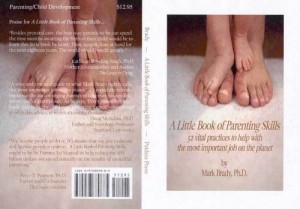Heart-Strengthening Gifts for Our Children
Strength of heart seems to be a kind of ineffable quality that we mostly know after we’ve seen it. Last time I suggested the first three of six experiences that we might provide our children – instruction and modeling that I feel ultimately contribute on a variety of levels – to strength of heart, a quality that naturally emerges with the easy self-regulation of fear. Below are the last three of the six practices.
Practice Contingent Communication
The research evidence seems reasonably clear – secure early attachment lays a solid foundation upon which children are able to build strong brains eight ways. Sort of like breadstuff for brain, only better. If you’re a parent and you were raised by loving parents who provided you with secure attachment, then your work with your own children may be different than those of us who weren’t provided such a base. It turns out that secure attachment emerges out of one primary interaction between parent and child – something known in the literature as contingent or collaborative communication. Contingent communication is manna for brain development – not only in children – but all across the lifespan. What exactly is it and why will we wither neurologically without it? There are essentially three elements. The first is we need to be paying attention. We need to be able to recognize that something is being communicated to us. Often times, this is not so easy or obvious. Great shades of subtlety can be involved, including what’s NOT being communicated – those things that “go without saying.”
So, once we’ve given our attention, we need to be able to make appropriate and accurate meaning of the message being sent. If a baby’s crying and we change her diaper, attempt to feed her, rock her and sing her a lullaby and she continues to cry, we haven’t accurately understood the message. This need for being accurately understood continues throughout the lifespan. How that understanding gets communicated back to us (and I consider this a great contemporary failing) is by being responded to in a timely and effective manner – the third and final critical element of contingent communication. Think about how much of the communication in the world today – from movies, TV and radio, to advertising and email spam, to preachers and teachers preaching and teaching at us. Even this column – to the extent that I send it out to the many and only hear back and exchange ideas with a few – falls into the category of non-contingent communication. What to do about this? Ironically enough, this is a question that I will be attempting to answer in a variety of ways in future columns. (Hint: NOT in a way that the five finalists in the most recent Turing Test competition have in mind for us).
Model Relationship Repair
More often than not, our neurophysiology plays havoc with our relationships. From being outraged at the things politicians say or the clothes our kids choose to wear, to the real or imagined slights inflicted on us by the important people in our lives. The good news is that the breeches, ruptures and misattunements resulting from reactive responses to things that rattle our cages, more often than not can be attended to and repaired. But mostly only from our side of the struggle. Here’s a useful guideline: whenever we’re upset with someone, it’s our job to initiate the work of repair. Now that you know this guideline, hopefully it will niggle you in the future. How exactly do we repair relationships ruptures? Very carefully, and probably only in season. And why should we? At some point in the future I will also explore this topic in further depth, since the research evidence seems to suggest it might be a critical element for healthy neuro-cardiology.
Provide Simple Instruction in Basic Neuroscience
As I mentioned in an earlier column, learning how my brain works has made it work infinitely better. Learning about the protective functions of my limbic system has been invaluable to me. Learning how real or misperceived threats to my survival trigger the release of adrenaline and cortisol in my body and brain – and what that actually feels like when it happens – allows me to have both awareness and some increased capacity for self-regulation. I can more easily recognize that MY upset is something originating in ME, often triggered by external people, places and events perhaps, but ultimately caused by my neurophysiology acting defensively, protectively. Learning about how all this works early on, with living examples, the way Bruce Perry’s kind kindergartners did, would have afforded me repeated opportunity to practice growing and mastering my own reactivity responses – often unwarranted and uncalled for out in the real world. What greater gift can we provide our children than learning to be able to self-regulate their neurophysiology in order to be able to feel safe and at home in the world?
These are six experiences identified by social neuroscience that often show up missing for clients of therapists and doctors. Intriguingly, they often show up missing in school principals’ and pastoral counselors’ offices, and in astrologers’ planet charts and yoga students’ asana as well. If you want to learn about some other surprising and important things that often show up missing (get ready, here comes the pitch!), send an email at paideia@gmail.com. Matter will be taken care.




